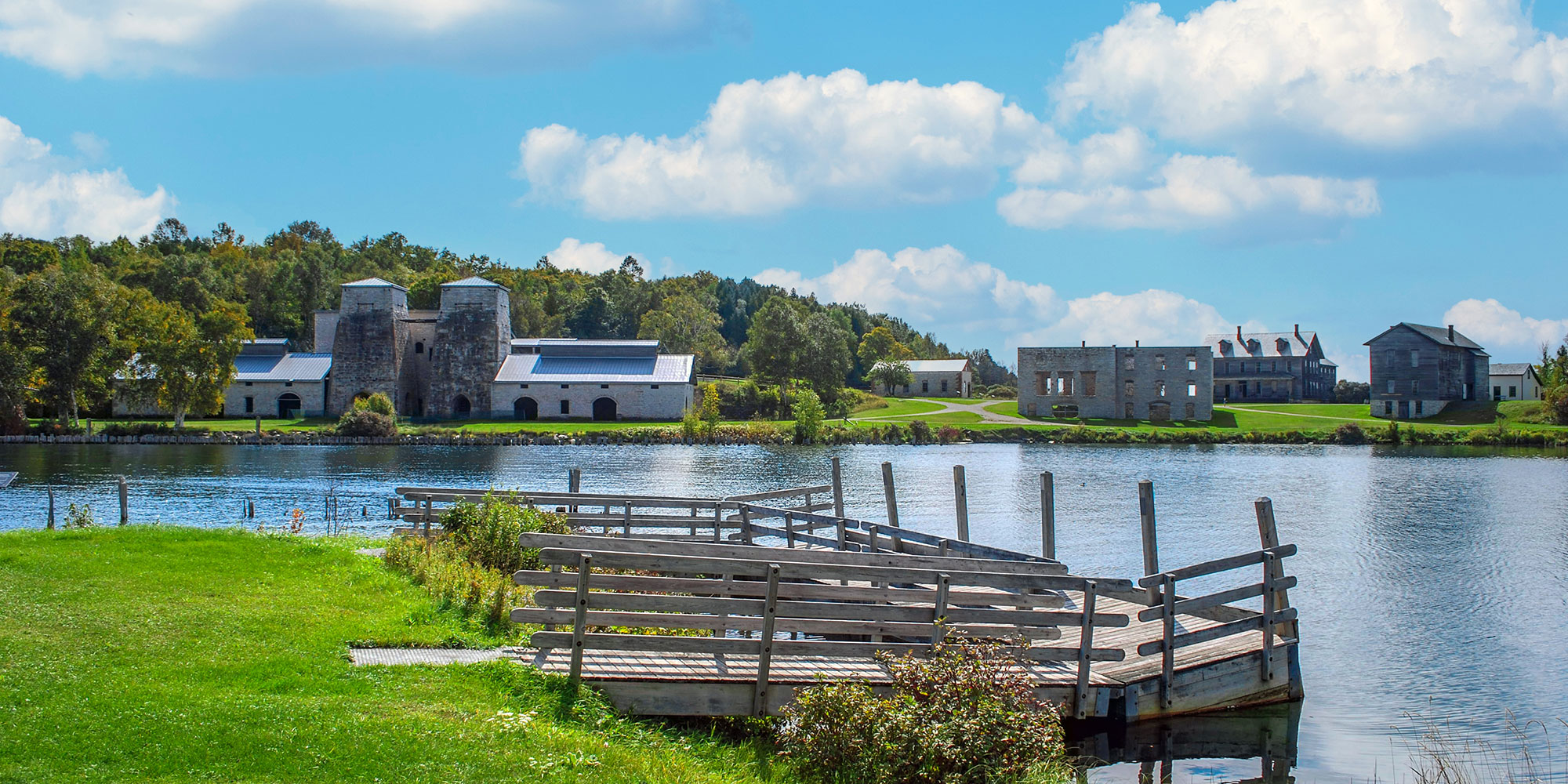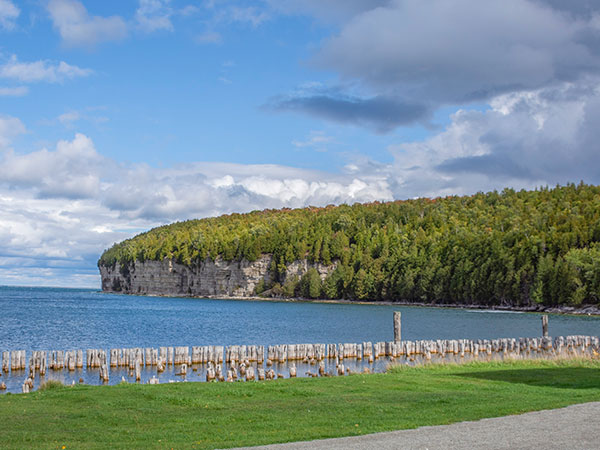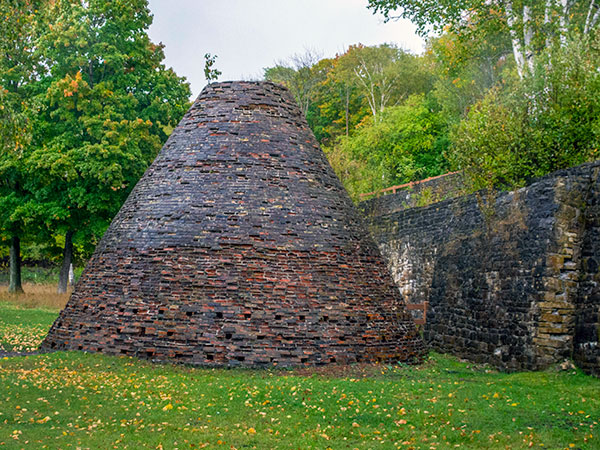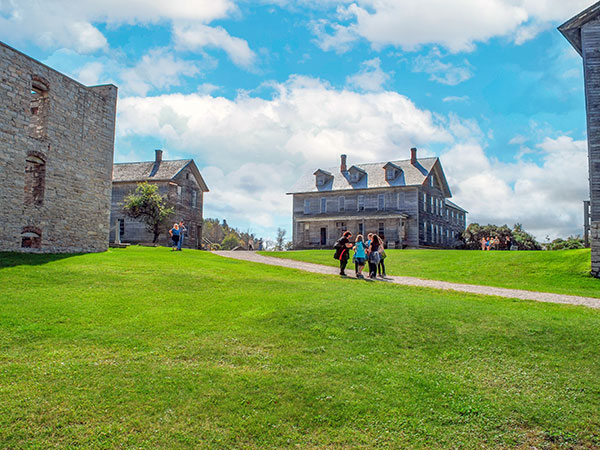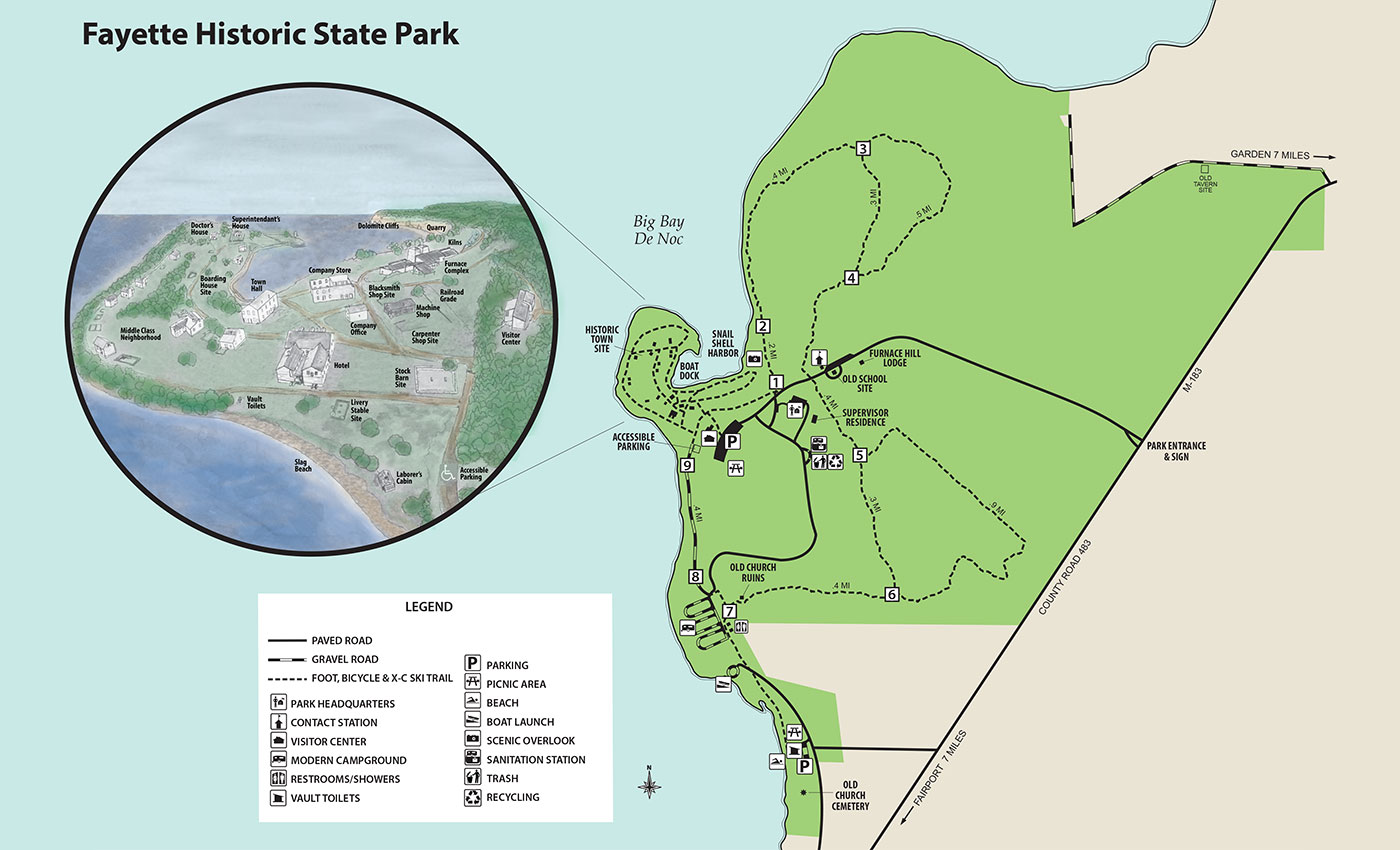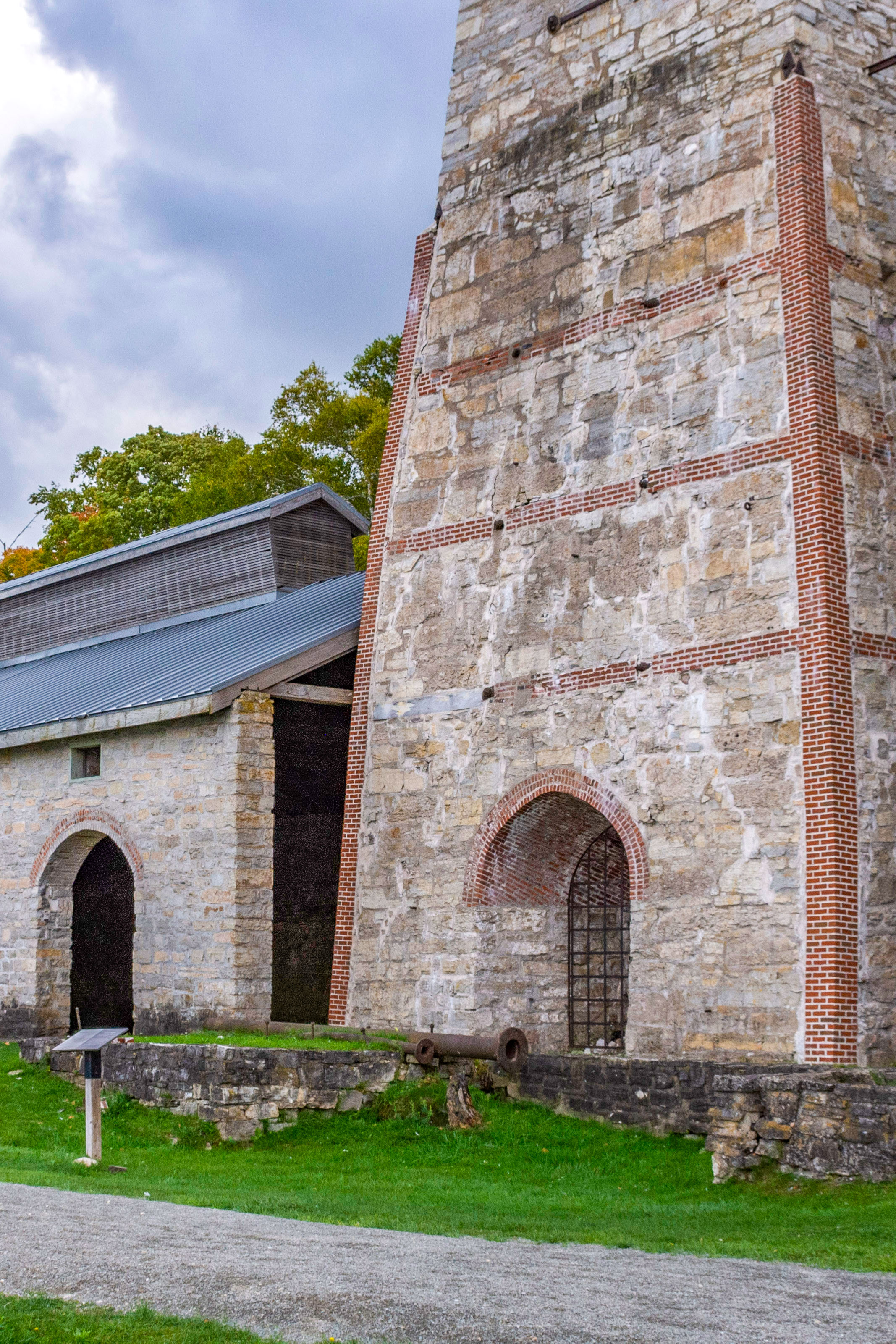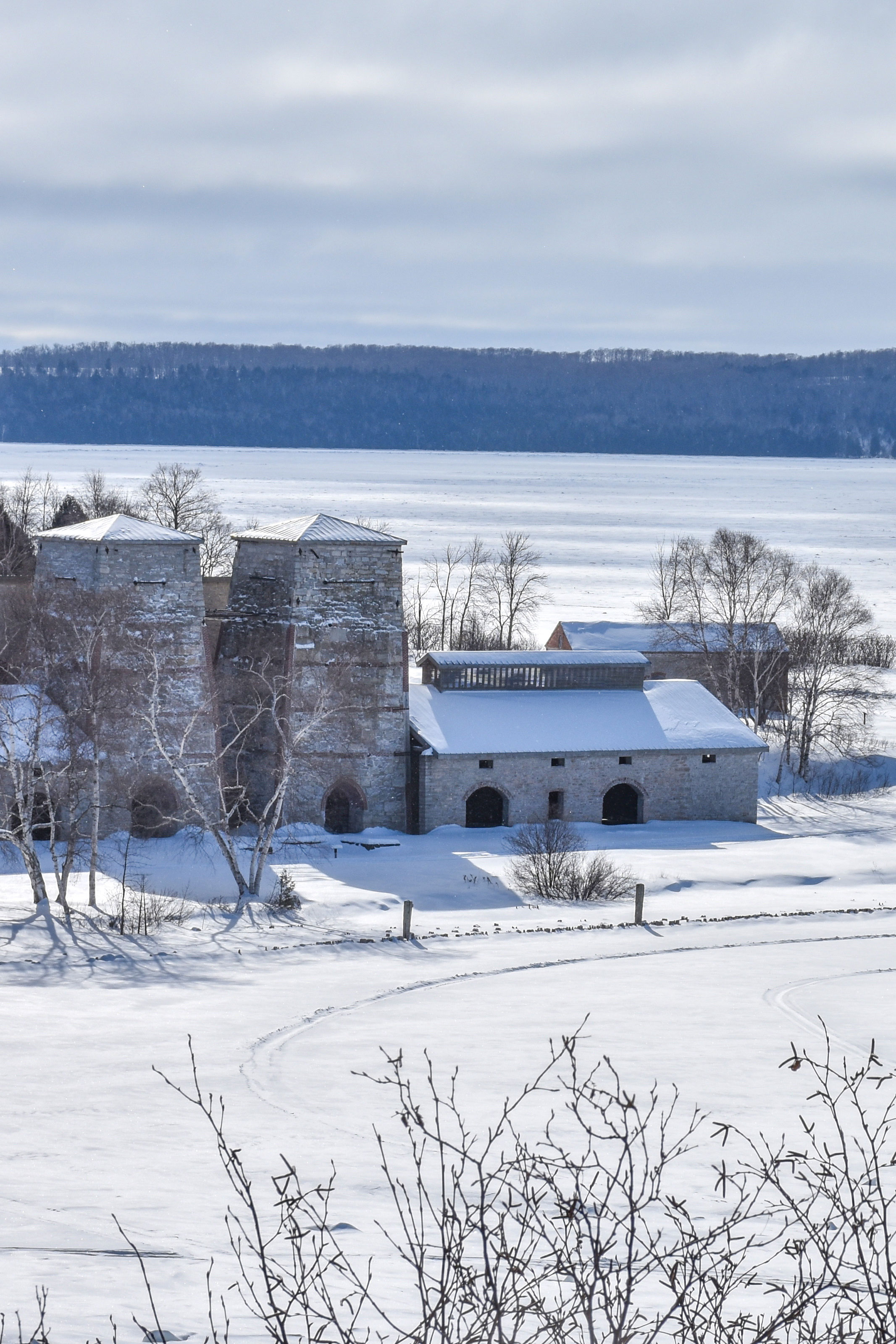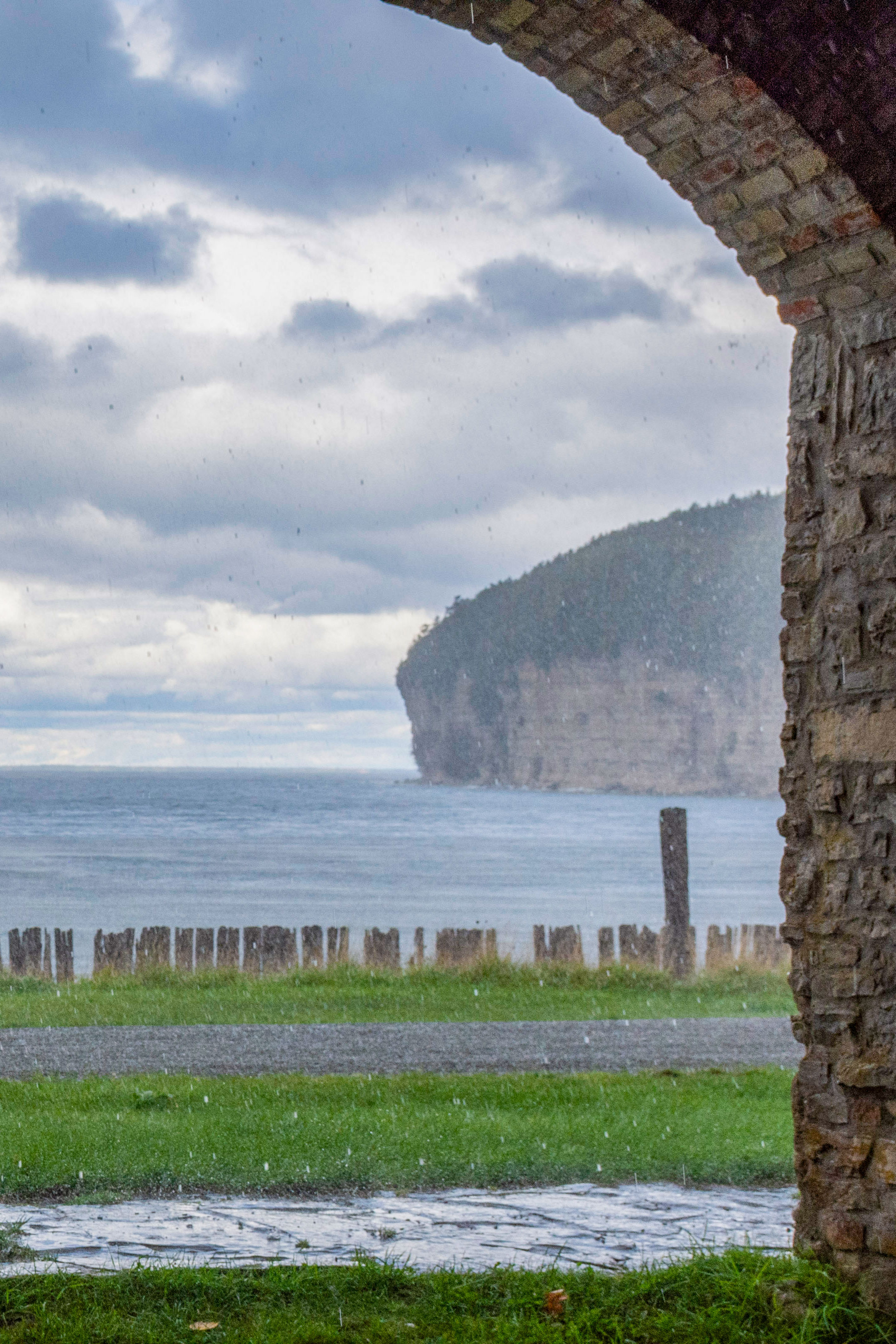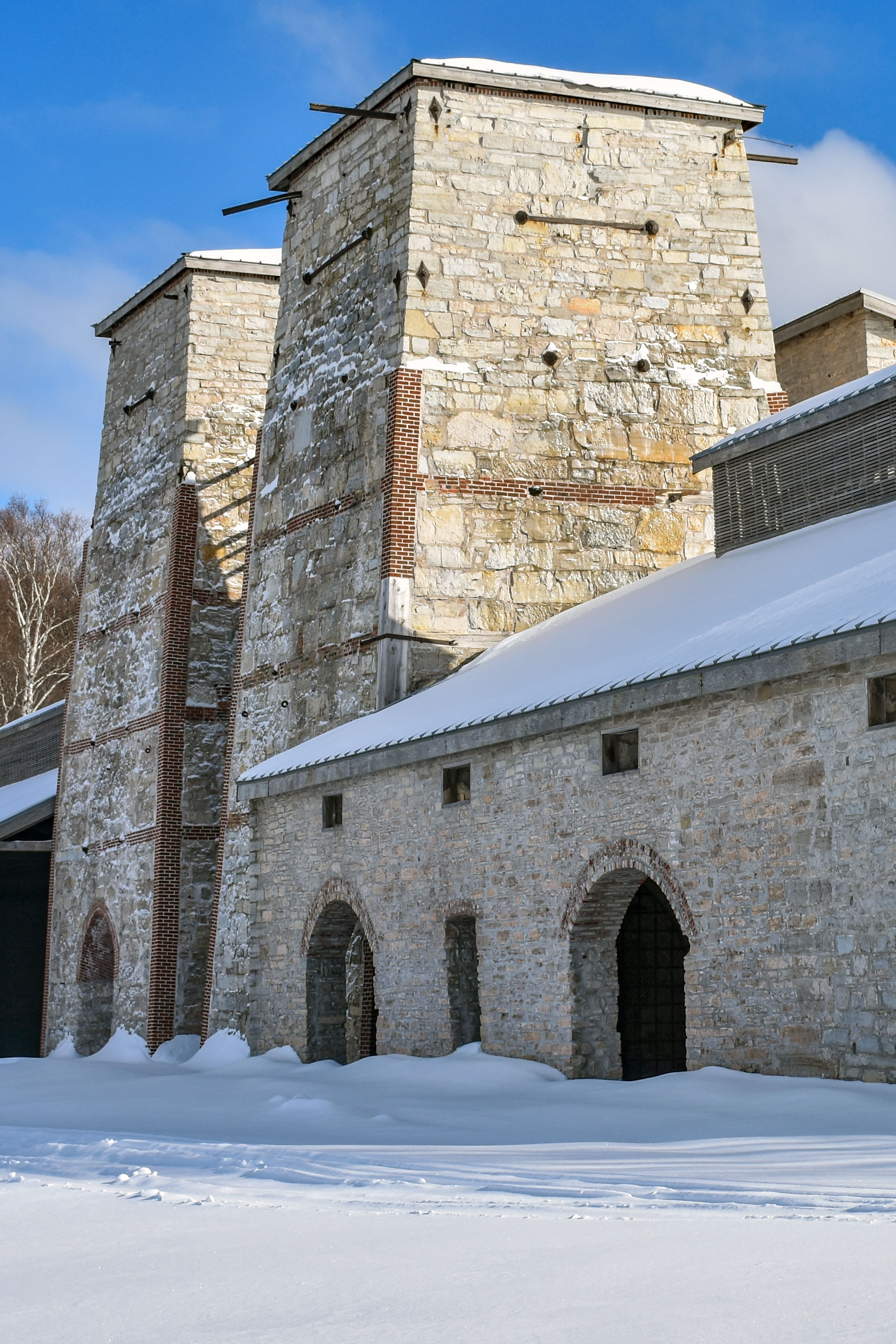Fayette, on the Garden Peninsula, is all about history. About 500 people lived in Fayette while smelting iron for the Jackson Iron Company from 1867 to 1891.
Many displays are open and others are constantly being updated. One of the displays is a laborer’s cabin, which is the only completely rebuilt structure in the town that features an opera house, hotel, charcoal and lime kilns, furnace complex, grain elevator site and homes. The old kiln site is an excellent location for taking photographs, including old-time wedding scenes.
“It is one of the premier company towns (in the country) we still have left,” said park supervisor Randy Brown. “This is one of the best portrayed of those kind of towns.”
Twenty restored buildings highlight an easy walking tour of this Michigan Historical Museum field site located in a state park, which is 17 miles south on M-183 from Garden Corners on US-2.
Approximately five miles of hiking trails — also available for cross country skiing in the winter — wind throughout the historic site and through a hardwood forest providing fantastic glimpses of adjoining Snail Shell Harbor or Big Bay de Noc.
Another highlight is hiking atop the Fayette bluff for a scintillating view of the harbor and townsite. The blue water and sky and the white limestone cliffs also provide excellent photo opportunities. Snail Shell Harbor is an enticing venue for rafting or kayaking. Scuba diving is also available, but only through a permit obtained at the park office. Several old artifacts may be viewed on the harbor bottom under proper conditions.
Find unmatched scenery and take a walk back in time at Fayette Historic State Park. Blending history and nature, the park is located on the shores of Big Bay de Noc – on Lake Michigan between Snail Shell Harbor and Sand Bay – on the southern side of Michigan’s Upper Peninsula. Visitors will also find a historic townsite, a modern campground, Snail Shell Harbor, a visitor center, a boating access site, a designated swim area and more. The park’s 5 miles of trails offer impressive views from 90-foot limestone cliffs that surround the harbor.
Fayette Historic Townsite represents a once-bustling industrial community that manufactured charcoal pig iron between 1867 and 1891 at the tip of the Garden Peninsula. Visitors may walk through the well-preserved buildings that have been standing for 150 years and learn about life during the 19th century. There are self-guided and guided tour options (summer months only) available.
Fayette Historic State Park
Great Getaways TV
from Great Getaways Episode #8018 "An Upper Peninsula Getaway" - Manistique, Michigan. Historic townsite, Fayette bluff and hiking trails.
Today, Fayette’s wealth of cultural and natural resources offers a unique blend of Michigan history and scenery. Fayette has an abundance of surviving structures from the 19th-century industrial community that was built to smelt iron ore. The blast furnace, hotel, office, residences, town hall, machine shop and other structures offer a rare glimpse into the diverse community and its operations. The museum village is nestled in a harbor surrounded by white cliffs, green forests and blue Lake Michigan waters.
The advantageous natural resources are what led Fayette Brown, a manager of the Jackson Iron Company, to select the site and begin building the town in late 1860s. The harbor was essential for the transportation of people, supplies and iron ore. The limestone cliffs provided flux for the smelting process and construction materials. The surrounding forests provided charcoal to fuel the blast furnace.
Between 1867 and 1891, Fayette was a bustling, noisy and dirty industrial community. During that time, the primarily immigrant population of approximately 500 people produced nearly 230,000 tons of pig iron ingots at Fayette. Most of the iron produced at Fayette was shipped to steel producers on the lower Great Lakes and converted into railroad rails and steel for the growing nation.
The blast furnace and supporting structures like the machine shop were the lifeblood of the town, but it was also a somewhat isolated community with a range of business and activities. Fayette had a coronet band, baseball team, horse racing track, school, post office and company store. Amid the steam whistles, smoke and whirl of engines were noises of children playing, the clattering of horses and clinging silverware from the hotel’s dining room.
When the Jackson Iron Company ceased smelting operations in 1891, most workers and families moved to other towns. Some residents remained in the area, and the site became a local tourist destination. In 1959, the site was acquired by the State of Michigan. Since then, we have developed visitor facilities, stabilized the remaining structures and installed exhibits that interpret Fayette’s rich history.

